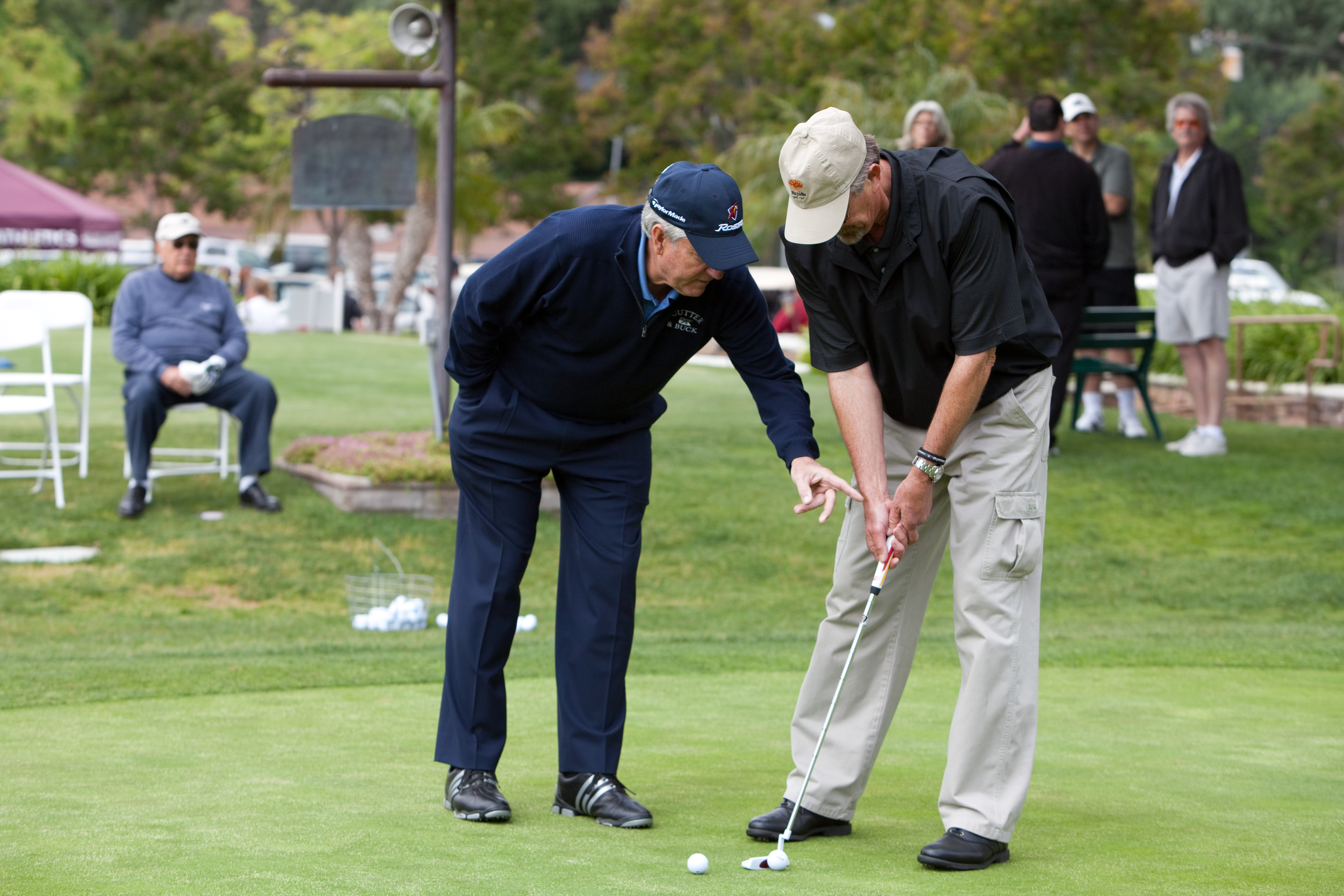I have played golf seriously for about a quarter century, and the game remains a complete mystery. I told my wife the other day to have my ashes scattered over the 18th green at Goose Creek, because that’s the only way I’ll ever hit it.
I recently decided to break down the game into pieces, to see if I could figure out at least one part of it. Since they say you drive for show and putt for dough, my first investment was a visit to the game’s putting guru.
SCGA Hall of Famer Dave Stockton has a beautiful home and a perfect man cave in Redlands. He has improved the putting fortunes of the likes of Annika Sorenstam, Phil Mickelson, Rory McIlroy and Francesco Molinari, to name just a few. He certainly couldn’t hurt mine.
I began amid hunting trophies and golfing memorabilia that are museumworthy. At first look, you might conclude that golf, for Stockton, was merely a little sideline to his hunting trips, both national and international. He and his wife, Catherine, have climbed six mountains higher than 14,000 feet, in quest of recreation, physical fitness and big-game targets.
“She’s a better shot than I am,” Stockton says. Stockton calls himself a conservationist, and currently serves on the board of directors of the Big Horn Institute, a group that tracks the animals in the hills of the Palm Springs area and tends to their health and well-being. Stockton does not hunt what he advocates protecting. The sheep he hunts — some of which have ended up as trophies on his walls — are from distant places and not in jeopardy of extinction.
The hunting trophies, while spectacular, do not dominate. This is a man who won two majors, the 1970 and ’76 PGA Championships, and turned in second-place finishes in the 1974 Masters and the 1978 U.S. Open. He won 25 professional titles, 14 of them on the Champions Tour, where he led money winnings twice, was rookie of the year in his inaugural year on that circuit, and player of the year once thereafter. He also was a U.S. Ryder Cup team member twice and was the nonplaying captain in the famous “War on the Shore” 1991 U.S. victory at Kiawah Island. The latter is commemorated in a vertical trophy case with a replica of the cup on a tall pyramid of golf books.
Oddly, much of this golf success might be traced to a surfing accident when he was 15, off the Trestles near San Onofre.
“A girl lost her board,” says Stockton, “and it hit me right in the back. I went back in, and didn’t know it had affected me until years later, when I learned about bone spurs in my back.”
Which meant he was never going to be a long hitter and would only be competitive among the game’s big bombers by being better than almost everyone else with his short game.
Which he was.
Some of his rules of putting, condensed and simplified here, are:
✔ Don’t stand over the ball forever. (When he won the PGA Championship in ’76, he needed a 15-foot putt on No. 18 to avoid a three-man playoff. From the time he stepped away from his caddie, addressed his ball and it hit the bottom of the cup, a total of 14 seconds elapsed.)
✔ Stop all the practice swings. (When he taught Sorenstam, she could not give up her practice swings. So he made her make them behind the ball, as many as she wanted, and then go into a quicker, more fluid routine. Prior to seeking Stockton’s help, she had won twice in recent years.
In the next 18 months, she won 17 tournaments.)
✔ Don’t say you will “try.” Just do it.
✔ Don’t “hit” a putt. Roll it. (“You hear these announcers say a player didn’t ‘release’ his putter,” Stockton says. “Do you release your paintbrush when you are done with a stroke?”)
✔ Look at the line of your putt and pretend there is a dot one inch away, on that line. Then roll the ball over the dot.
✔ Hold the putter in your left hand only, until you are about to roll the ball. (Vice versa if you are left-handed.)
✔ Don’t accelerate or decelerate. Just roll it.
From this, and much more, came a remarkable career for a man who is, at 77, still hunting, still playing golf at a high level and still carrying a nice sense of humor. America’s putting guru once set a tour record by going more than 800 holes without a three-putt.
The streak ended in the U.S. Open at Pebble Beach when, he says, he had 10 three-putts and “four-putted the 10th green, the only flat green at Pebble Beach
Oh, well. After that, he probably went hunting.


